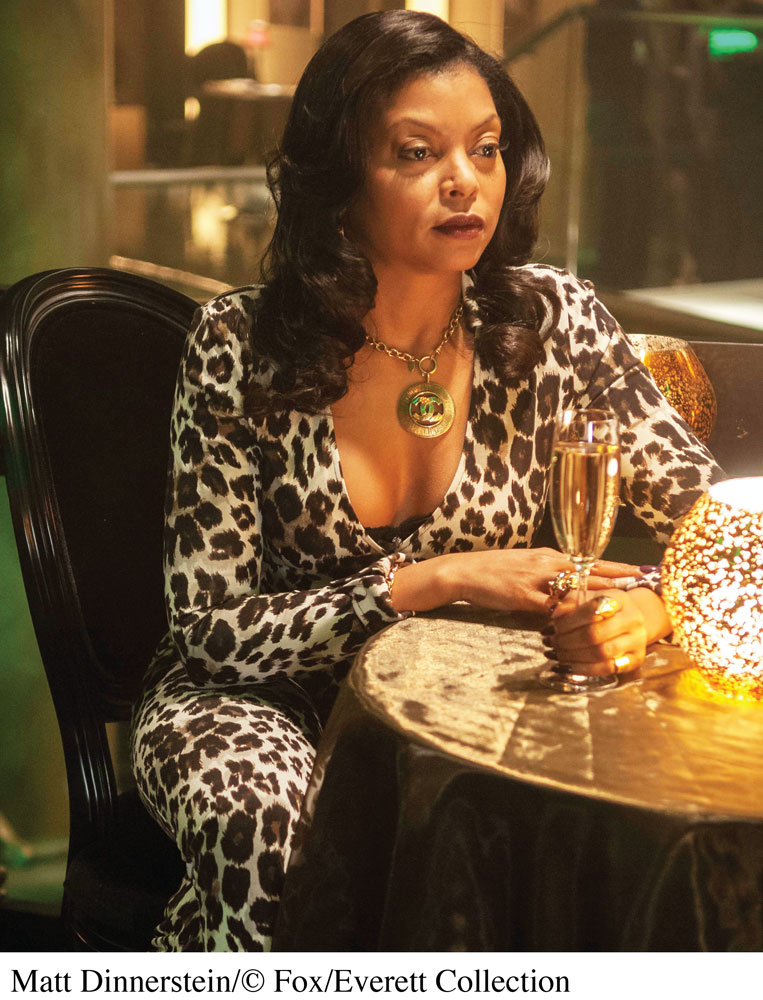Chapter Introduction
8
Television, Cable, and Specialization in Visual Culture

It wasn’t all that long ago when television critics worried that reality television shows like The Bachelor, Jersey Shore, and Celebrity Apprentice would kill off scripted television programs. Reality television, so named because of its supposed lack of scripting and ability to capture spontaneous “real life” (though it often employs contrived situations and conflict), is much cheaper to produce than programs that require higher-paid writers and actors, and more elaborate sets and scripts. As these types of shows grew more popular, there was a fear that networks and production companies would shift their focus and abandon the more expensive scripted shows.
But since 2010, high-concept scripted television comedy and dramas have enjoyed a comeback in popularity. Some of these commercial or critical hits have come from the Big Four broadcast networks, such as Scandal on ABC or Empire on Fox (pictured at left), but many have come from other outlets. For example, premium cable channel HBO, whose hit series The Sopranos ran from 1999 to 2007, hit it big again in 2011 when it tackled the epic fantasy novel series with the TV adaptation Game of Thrones. Cable channel AMC, once home to replays of theatrical films, captured its share of critical, commercial, and pop culture success with series like Mad Men, Breaking Bad, and The Walking Dead.
Perhaps even more revolutionary, though, has been the success of television that never existed as a cable or broadcast network series. Video-streaming giant Netflix has received critical and audience attention with programs like House of Cards and Orange Is the New Black, releasing an entire season’s worth of episodes at the same time. Viewers no longer need a cable subscription or even a television set to watch these programs (although over 90% of U.S. homes do have a TV set). Thanks to technological convergence, services like Netflix and Hulu can be watched on laptops, tablets, and smartphones as well. Responding to this success, other nontraditional sources of programming have been looking into creating their own productions, such as Yahoo! Screen picking up the canceled NBC series Community for another season. Reality shows still flourish, too—there’s more space than ever before for new shows of any genre. It turns out, then, that fears about one type of show dominating the medium were unfounded. Viewers want good stories across genres, channels, and platforms.
FOR A LONG TIME AFTER ITS INCEPTION, television brought millions of American viewers together to share major turning points in U.S. history. For example, people gathered around their sets to watch coverage of Civil Rights struggles, the moon landing, the Watergate scandal, the explosion of a space shuttle, the 9/11 attacks, Hurricane Katrina, and the wars in Iraq and Afghanistan. Television also united people around more enjoyable activities, like movie, television, and music awards shows (the Oscars, the Emmys, or the CMA Awards), or major sporting events like the Super Bowl. Throughout the country, Americans watched the latest episode of their favorite TV comedy or drama at home, then discussed it with friends and colleagues the next day.
With the invention of cable and then satellite television, we now have more channels and programming options than ever to choose from, each of them appealing—like magazines—to narrow niches of viewers. New platforms keep attracting more users as the ways we experience television continue to change. In 1977, only 14 percent of all American homes received cable service (which at that time carried just twelve channels). In 1999, that number had grown to 70 percent (with many times more channels). However, by 2011 it dipped below 50 percent because of competition from Internet-based streaming and direct broadcast satellite (DBS) services—and “cord-cutting” has only become more popular since. Even traditional cable television customers no longer rely on the same services, with digital cable, DVR, and video-on-demand giving us more options for what we watch and how we watch it.
These technologies and business models, then, have changed the way we watch television and modified the role it plays in our lives. It’s become easier to watch only what we want—when and where we want. But it’s also harder to capture that sense of community that comes from watching a program together in our living rooms and talking about it with others afterward.
In this chapter, we examine television’s impact on American life—yesterday, today, and tomorrow—by:
considering television’s early history, including its foundational technological innovations, the development of program content, and the arrival of cable
tracing turning points in the evolution of network programming, such as the development of daily news broadcasts, the arrival of new entertainment forms (comedy, drama, reality television), and the creation of public television
exploring the evolution of cable and satellite programming, including the emergence of basic and premium services
assessing the regulatory challenges network television and cable have faced, such as the government’s attempts to decrease networks’ control over content and limit cable’s growth
examining network television and cable in the digital age, including the impact of home video; the Internet, cell phones, and mobile video; and direct broadcast satellite
analyzing the economics of television by considering how industry players make money and what they spend it on to stay in business
raising questions about television’s role in our democratic society, such as whether it is uniting us or fragmenting us and whether it’s giving a greater or fewer number of people a voice